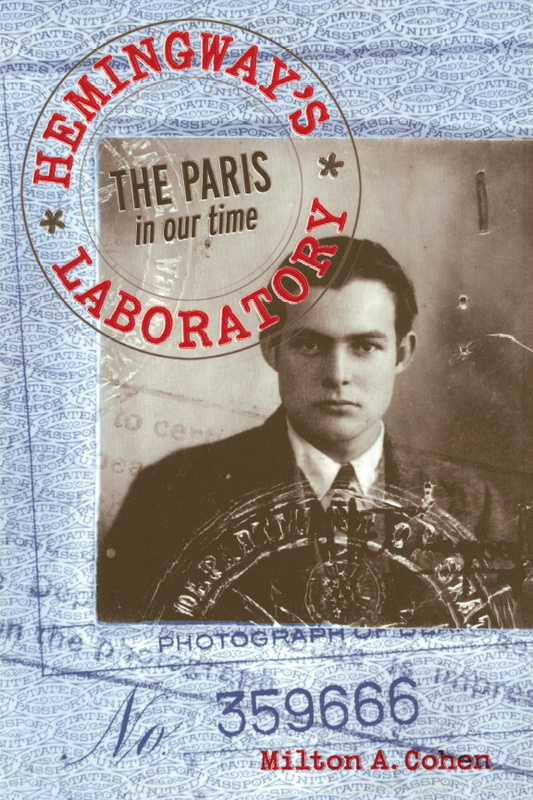Illuminates the development of Hemingway’s themes and techniques and his future course as a stylist and writer.
In 1924 Ernest Hemingway published a small book of eighteen vignettes, each little more than one page long, with a small press in Paris. Titled in our time, the volume was later absorbed into Hemingway’s story collection In Our Time. Those vignettes, as Milton Cohen demonstrates in Hemingway’s Laboratory, reveal a range of voices, narrative strategies, and fictional interests more wide-ranging and experimental than any other extant work of Hemingway’s. Further, they provide a vivid view of his earliest tendencies and influences, first manifestations of the style that would become his hallmark, and daring departures into narrative forms that he would forever leave behind.
Many of the chapters are pointillistic glimpses of violence--bullfights, a botched execution, the fleeting thoughts of the wounded on the battlefield. Others reach back into childhood. Still others adopt the wry, mannered voice of English aristocracy. Though critics have often read these chapters as secondary asides to the longer stories that constitute the commercial collection, Cohen argues that not only do the vignettes merit consideration as a unit unto themselves, but that they exhibit a plethora of styles and narrative gambits that show Hemingway at his most versatile.
The final section examines in detail the individual chapters of in our time, their historical origins, their drafts, themes, and styles. The result is an account of what is arguably Hemingway’s most crucial formative period.
Cohen (Univ. of Texas, Dallas) offers here the first careful linguistic study of the stories and one-page vignettes that alternate with them in Hemingway' first volume of fiction, in our time (always written lower case), published in Paris in 1924. (The stories reappear in the second volume--bearing the same title, capitalized--along with additional stories, in 1925). Cohen argues that the vignettes are more important than critics have previously granted, and he mounts a convincing case for reprinting the first book, given Hemingway's durable status. He gives a close repertory and systematic reading of Hemingway's experiments in narrative modes, voices, and sentence rhythms and, in the second half of the book, examines in detail each of the chapters in the original volume. Though Cohen acknowledges the biographical and historical background (and explains 'the tangled publication history'), his quantification approach is that of a genetic linguist. He includes lists and graphs detailing Hemingway's structural experiments, tabulating the repetition of words, listing the typology of sentences, and specifying the revisions. A commendable appendix assesses how these initial experiments fared in Hemingway's subsequent work. Interesting primarily to Hemingway specialists. Summing Up: Recommended. Graduate students; researchers; faculty.'
—CHOICE
'There is nothing in Hemingway studies that is nearly so thorough and syste-matic as Hemingway’s Laboratory. Professor Cohen's study combines a great deal of original thinking with a lucid and pleasantly written synthesis of previous scholarship. One of the strongest qualities of this book is the author's knowledge of the entire Hemingway oeuvre and its place in American modernist letters.'--Matthew Stewart, author of Modernism and Tradition in Ernest Hemingway's in our time.
“Deftly written and impeccably researched . . . a path-breaking study of Ernest Hemingway's Paris apprenticeship and his early experiments with English prose. Looking through the lens of Hemingway's 1924 in our time, Milton Cohen enlarges our understanding of the revolutionary Hemingway style and the origins of American literary modernism.”--Susan F. Beegel, Editor, The Hemingway Review
Milton A. Cohen is Associate Professor of Literary Studies at the University of Texas at Dallas and author of Poet and Painter: The Aesthetics of E. E. Cummings’s Early Work.





